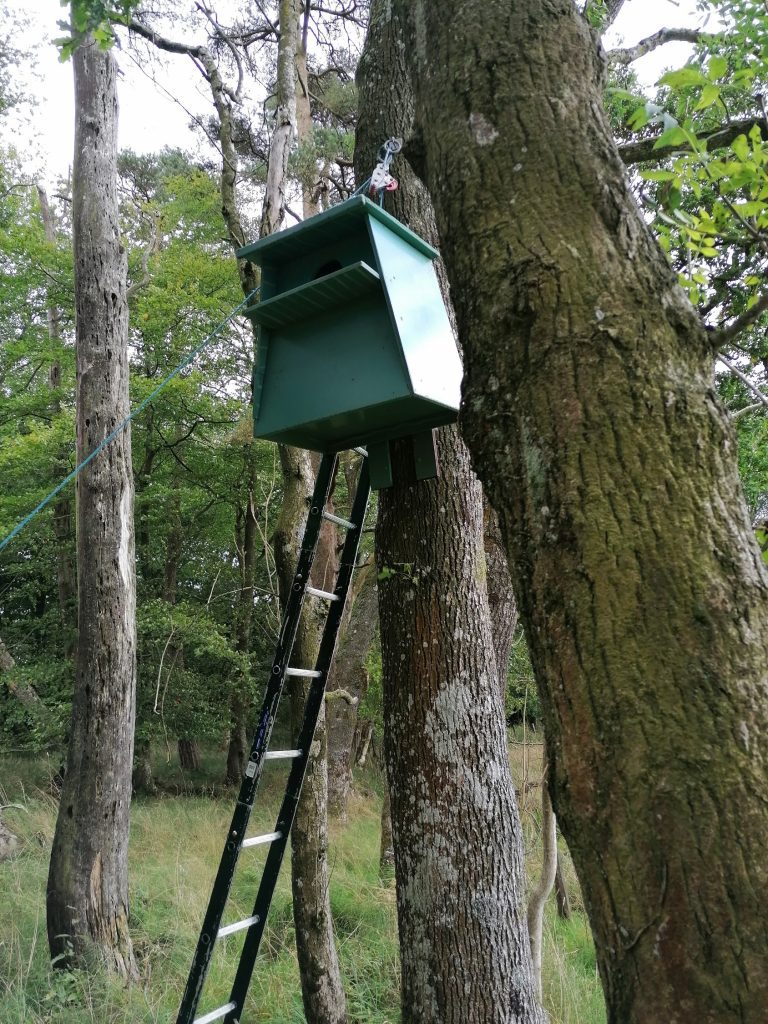The Galloway Glens Barn Owl Project has supported the location and installation of more than 30 purpose-built nest boxes in the Ken/Dee valley and surrounding area, with follow-up monitoring of the boxes and ringing of chicks produced by breeding pairs. This has been a partnership project in the truest sense, using funding from the National Lottery Heritage Fund, support from landowners, British Trust for Ornithology (BTO) ringer Tom Greenaway and licensed raptor handlers with the nest boxes being made by HM Prison Dumfries woodwork shop.
The project generated great interest amongst local communities, farmers, landowners and individuals with the first boxes installed at the National Trust Scotland Threave estate at Kelton Mains. The installation of boxes has followed at 17 different locations between Carsphairn and Kirkcudbright on farms, woodland, commercial forestry, gardens, derelict buildings and the Kirkcudbright military range.
Jonathan Barrett, Galloway Glens Land Management and Access Officer said
“The aim of this project has been to promote and support a healthy and sustainable population of Barn Owls throughout the Glenkens and surrounding areas. By broadening the range of the local Barn Owl population, the opportunity for residents and visitors alike to see and enjoy the presence of this iconic bird has been significantly improved. Our thanks go to Tom Greenaway for all his work, all the partners and landowners who have contributed time and locations to make this project a success”.
The Ken/Dee valley has an abundance of suitable habitats but fewer breeding pairs of owls than it should have. The project has successfully encouraged the presence of more Barn Owls in suitable habitats in the area and visitors are encouraged to look for evidence of the presence of Barn Owls on their travels. Suitable habitats are disused or derelict buildings and woodland in isolated and undisturbed areas surrounded by open grass land.
Barn Owls are birds of prey, hunting and catching small mammals, mostly Field Voles, and have some extraordinary adaptations to help them hunt for food at night, such as incredibly sensitive hearing and the ability to see movement with very little light. Barn Owls are an iconic and much-loved species which is widely distributed across the UK although their populations have declined over the last 100 years as a result of changes in agricultural practice and loss of habitat.
The Barn Owl is specially protected under Schedules 1 and 9 of the Wildlife and Countryside Act 1981. It is illegal to kill, injure or take a wild Barn Owl or to take or destroy its eggs.






